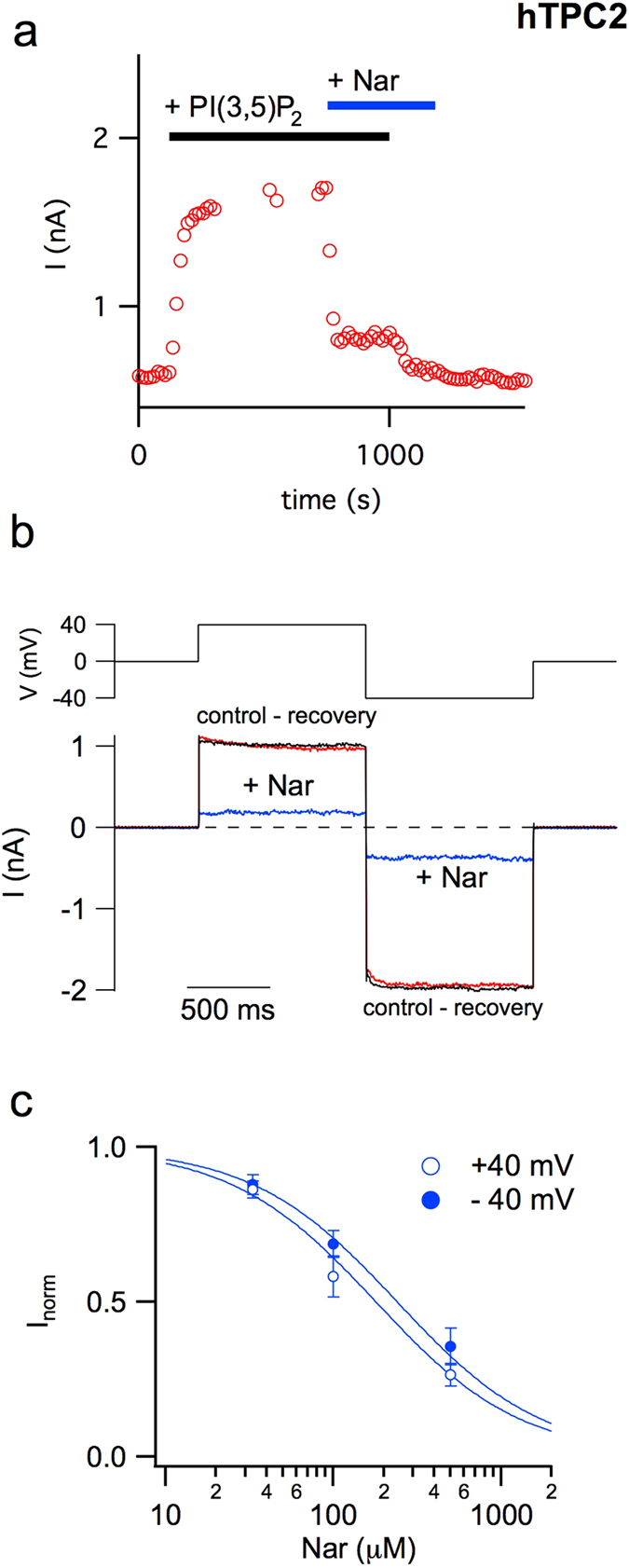Figure 1.

Naringenin inhibits the activity of the human TPC2 channel. (a) Time course of current amplitude recorded in response to bath application of 330 nM PI(3,5)P2 (upper black bar) before and after adding 500 μM Nar (upper blue bar). Each point represents the steady-state current at +40 mV. (b) Currents mediated by hTPC2 and induced by the application of 330 nM PI(3,5)P2 in the cytosolic bath solution were recorded at +40 and −40 mV (shown in the upper voltage profile) in the absence or presence of 500 μM cytosolic Nar. For the sake of clarity, background currents in the absence of the phosphoinositide were directly subtracted. (c) Dose–response analysis of Nar inhibition. Inorm, the normalised current, was obtained by the ratio of currents recorded respectively in the presence and absence of cytosolic Nar. Both at +40 and −40 mV, normalised currents at different Nar concentrations were fitted with a Michaelis–Menten function (continuous lines). Data from 3 (Nar 33 μM), 6 (Nar 100 μM) and 9 (Nar 500 μM) different vacuoles were shown as mean ± s.e.m. Values at positive and negative voltages, at a defined Nar concentration, were not significant (P > 0.2); values at different Nar concentrations and at a defined voltage (+40 or −40 mV), were statistically significant (at least P < 0.01).
